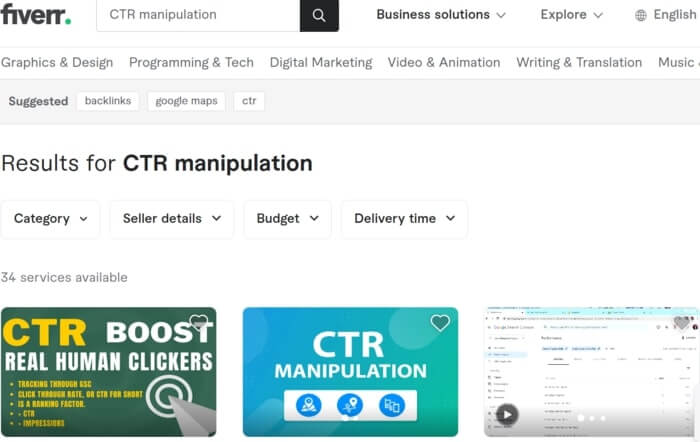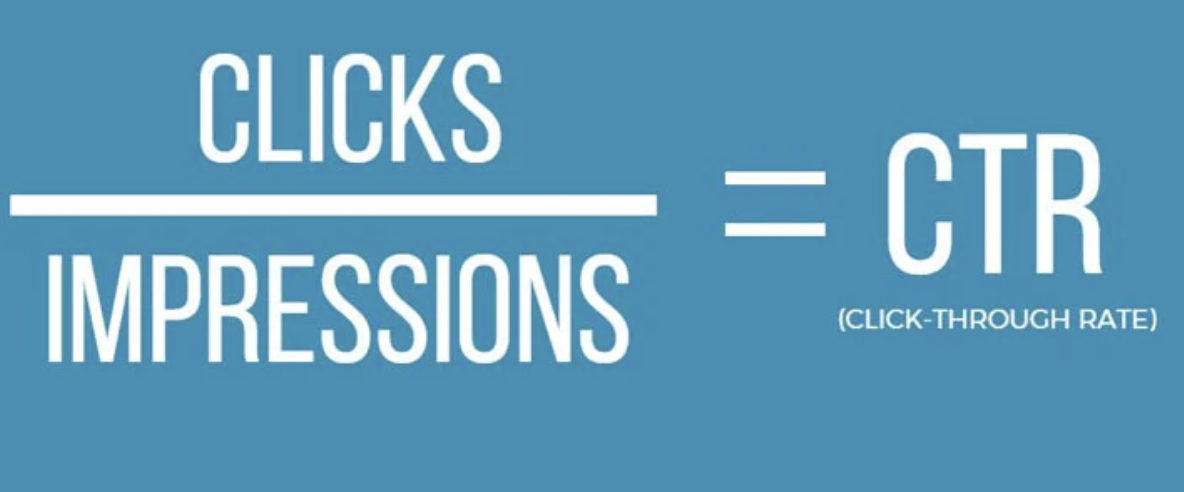Supercharge Your Link Structure Initiatives with LinkDaddy CTR Manipulation Expertise
Wiki Article
Optimizing Organic Click-Through Fees With CTR Adjustment
The optimization of natural click-through prices (CTR) is a nuanced endeavor that pivots on recognizing both customer psychology and reliable web content discussion. The landscape is swarming with false impressions and oversimplifications about what absolutely drives CTR.Recognizing Click-Through Fees
Recognizing click-through prices (CTR) is necessary for examining the efficiency of on-line advertising techniques. CTR measures the percentage of customers that click on a specific web link or promotion compared to the total number of customers that see it. A greater CTR suggests that the material is engaging and pertinent to the target market, while a lower CTR may indicate a need for optimization.To compute CTR, split the number of clicks by the variety of impressions and increase by 100. If an advertisement gets 300 clicks out of 10,000 impressions, the CTR would certainly be 3%. This metric is important for evaluating various aspects of digital advertising and marketing, consisting of search engine optimization (SEARCH ENGINE OPTIMIZATION), email projects, and social media advertising and marketing.
Additionally, analyzing CTR assists marketing professionals determine which strategies produce the most effective results and which call for refinement. By concentrating on improving CTR, organizations can boost their web content's visibility and efficiency, resulting in raised web traffic and prospective conversions. Understanding the subtleties of CTR is fundamental for any marketer aiming to maximize their online visibility and optimize return on financial investment (ROI)

The Psychology of Individual Actions
Customer habits is dramatically influenced by mental elements that dictate just how people connect with on-line material. Comprehending these elements is vital for enhancing click-through rates (CTR) in natural search engine result. Cognitive predispositions, such as the anchoring impact, play an essential role fit individuals' understandings. Their preliminary perceptions can heavily affect their subsequent judgments concerning significance and reliability. when customers come across details.Emotional feedbacks also considerably influence individual behavior. Web content that resonates psychologically can activate a sense of urgency or interest, motivating individuals to click. Additionally, social evidence-- such as individual evaluations or scores-- can enhance depend on and motivate involvement, as individuals typically seek to the habits of others to educate their own decisions.
Moreover, the concept of deficiency can drive clicks - CTR Manipulation Press Release. Limited-time offers or special web content develop a worry of missing out (FOMO), compelling users to act rapidly. Comprehending these psychological vehicle drivers makes it possible for online marketers to create more compelling material that reverberates with their target market
Reliable CTR Adjustment Techniques
Leveraging psychological insights can considerably improve click-through rates (CTR) with targeted control methods. One of the most effective methods is making use of compelling headings that stimulate inquisitiveness or seriousness. Phrasing titles as questions or incorporating numbers can attract more attention, motivating customers to click.An additional technique involves optimizing meta summaries to develop a feeling of significance and immediacy. By clearly describing the benefits or services given in the material, you can involve possible viewers and convince them to click. Additionally, using power words-- such as "exclusive," "proven," or "totally free"-- can boost the allure of your material.
Aesthetic aspects also play an important role. Incorporating eye-catching pictures or thumbnails can draw customers in and enhance CTR. A/B testing different visuals can help recognize which pictures resonate ideal with your audience.
Last but not least, making certain that your material promises deliverable worth causes higher CTR. They are extra likely to involve when individuals regard that clicking will certainly supply them with meaningful understandings or solutions. By utilizing these strategies thoughtfully, marketers can successfully adjust CTR to their advantage while keeping ethical requirements.
Usual Myths Concerning CTR
Numerous misunderstandings surround click-through rates (CTR) that can lead marketing experts to make misguided decisions. While a high CTR suggests a fantastic read that more individuals this page are clicking, it does not ensure sales or conversions.Another common idea is that CTR is a separated metric. In fact, CTR needs to be reviewed together with other efficiency indicators, such as bounce price and conversion rate, to acquire a holistic sight of project success.
Furthermore, some marketers assume that maximizing for CTR alone suffices. However, concentrating exclusively on CTR can result in clickbait strategies that might bring in clicks however fail to engage customers meaningfully. This technique can harm brand name track record and lead to reduced retention rates
Lastly, there is an idea that CTR approaches are universally reliable. The reality is that optimal CTR methods can vary significantly throughout sectors and target audiences, demanding tailored strategies for different market sectors. Comprehending these myths is critical for creating efficient CTR approaches that line up with overarching marketing objectives.
Gauging CTR Success
Although high click-through rates (CTR) can show successful interaction with material, measuring their true success calls for an extensive evaluation of several aspects. It is vital to recognize the context in which the CTR is achieved. For circumstances, a high CTR on a deceptive title may not equate to purposeful engagement or conversions, ultimately mirroring poorly on the brand's credibility.2nd, reviewing the resource of traffic is important. Organic web traffic from online search engine can symbolize a durable web content approach, while clicks from irrelevant sources may indicate a lack of targeting. Furthermore, gauging the succeeding customer actions is essential; analyzing metrics such as bounce rate, time spent on page, and conversion rates can give deeper understandings right into the top quality of the involvement launched by the CTR.

Conclusion

The optimization of organic click-through prices (CTR) is a nuanced endeavor that hinges on understanding both individual psychology and effective material presentation. CTR measures the percent of customers who click on a certain web link or advertisement contrasted to the total number of users that view it. A greater CTR shows that the web content is engaging and relevant to the target audience, while a lower CTR might indicate a need for optimization.
Concentrating specifically on CTR can lead to clickbait methods that may bring in clicks however stop working to engage users meaningfully. In addition, determining the subsequent customer actions is crucial; examining metrics such as bounce rate, time invested on page, and conversion rates can give deeper insights into the high quality of the engagement started by the CTR.
Report this wiki page